Easy Homemade Grass-fed Tallow Balm
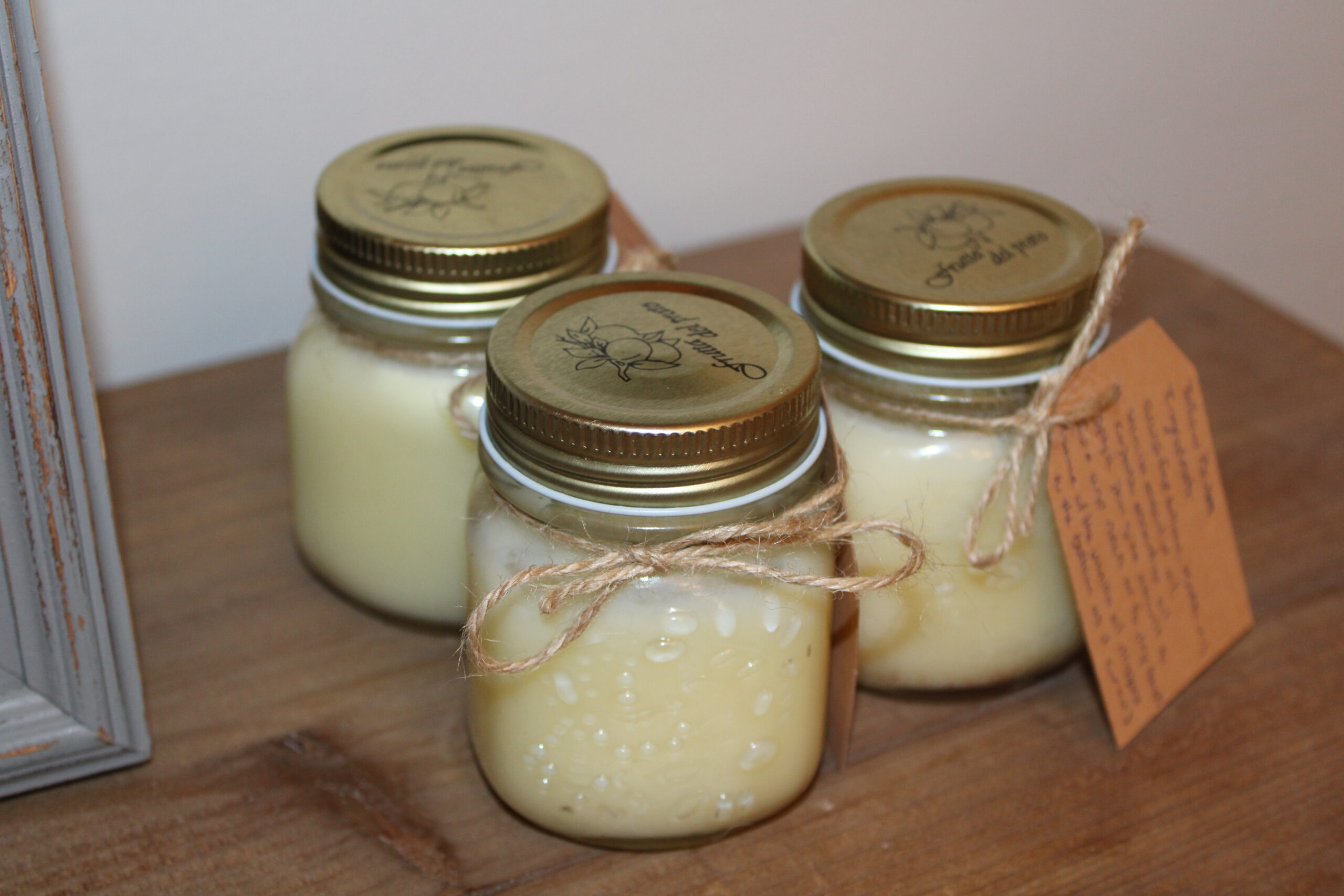
After using Homemade Grass-fed Tallow Balm for a year, my skin has never been happier! As the largest organ of the body, our skin deserves the utmost care, with healthy eating being only one component of holistic wellness. Find out why grass-fed tallow outshines other moisturizers, offering exceptional benefits for your skin. And learn how to make your very own homemade tallow balm that comes together quickly with only a few simple ingredients!
My Experience Using Grass-fed Tallow Balm
It’s been about a year since I started using homemade tallow balm, so I thought I’d share my experience. I think it’s important to note that this is just my experience, and not everyone’s skin will react the same way. As with any new skincare product, whether homemade or store bought, it’s important to patch test a small amount before using grass fed beef tallow more broadly.
I played around at first with pairing it with different oils, and essential oils. In this post, I share the recipe I eventually landed on and am happiest with. I’ll cover why I chose each ingredient within the post as well, so keep reading to learn about the benefits of each ingredient.
I still remember my initial reaction the first time I tried homemade tallow balm. I thought “I’ll never buy expensive skin care products again!”. I’m not exaggerating when I say it is the best moisturizer I have ever used!
Since I began making my own tallow balm, I’ve noticed several benefits, including a reduction in fine lines and wrinkles, clearance of rosacea on my cheeks, and an unexpected complete elimination in my keratosis pilaris when I applied my tallow balm to affected areas (I’ll go into a little more detail about this in a moment.)
What is Tallow?
Tallow is a type of rendered leaf fat that is derived from the fatty tissue of animals (most commonly beef fat or sheep). It has been used in a variety of ways throughout history, including as a cooking fat, a source of fuel for lamps, and as an ingredient in traditional soap and skincare products, for which it is regaining popularity in recent years. When seeking rendered tallow, thoughtful consideration should be given to sourcing, and exploring options from a local farm, you may find better aligns with both ethical and sustainable values.
Easy Homemade Grass-fed Tallow Balm Recipe
Equipment:
- Double boiler
- Glass mason jar with an airtight lid to store your tallow balm
Ingredients:
- 1 cup grass fed beef tallow
- 2 TBSP Jojoba Oil
- 2 TBSP Rosehip Oil
- 48 drops of essential oils of choice (Essential Oil Dilution Chart). My current favorite is Copaiba Oil.
Instructions:
Begin by filling a small saucepan with an inch or two of water. Place the double boiler over the pot of water, and bring water to a boil over medium-high heat.
Once the water is boiling, turn the burner down to a very low heat.
Add tallow to the double boiler and allow it to melt, stirring as needed. You want the tallow to melt completely, but not boil.
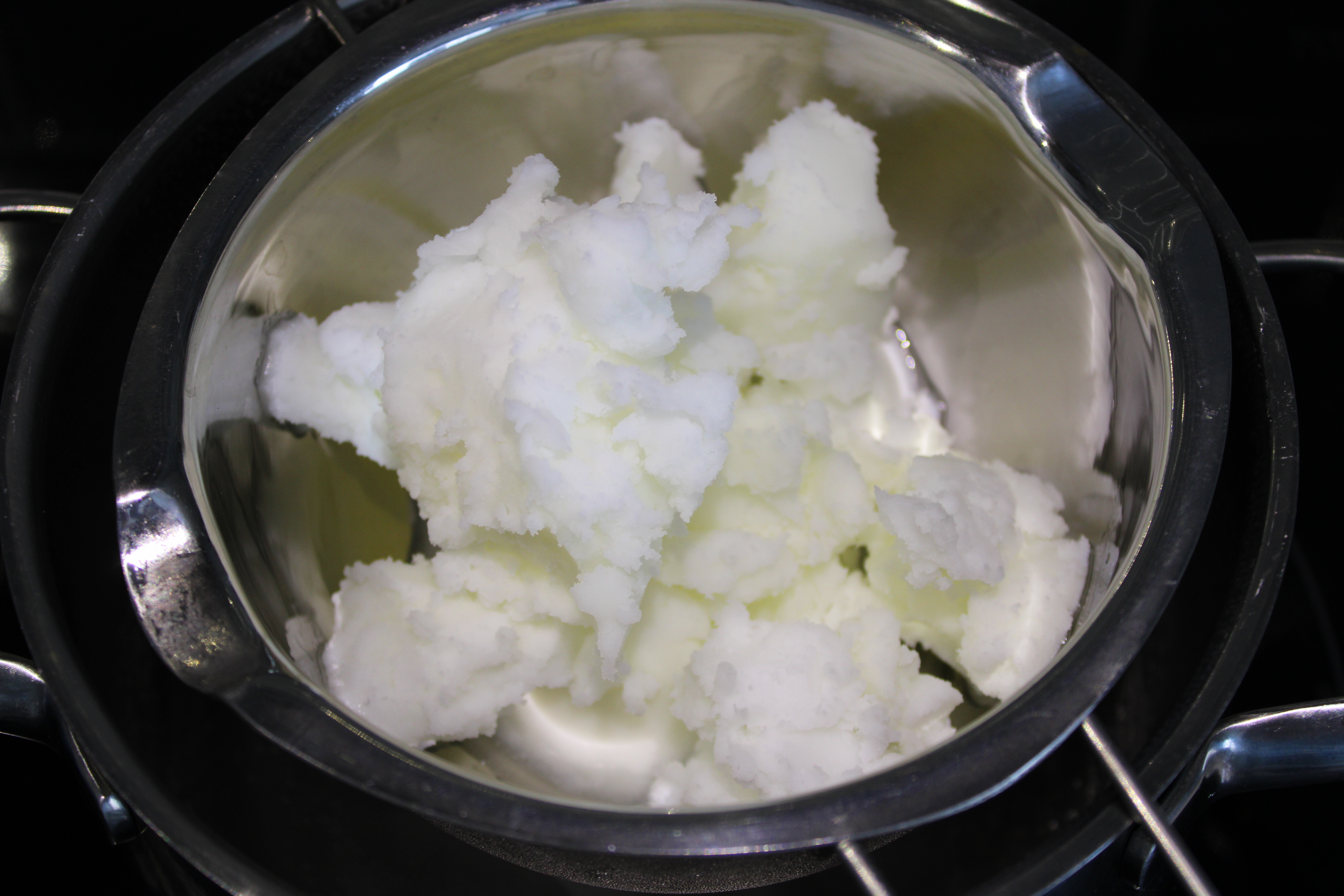
Once tallow has completely melted turn off stove and remove from heat.
Add the jojoba oil and rosehip oil to the melted tallow. Stir well to thoroughly combine ingredients.
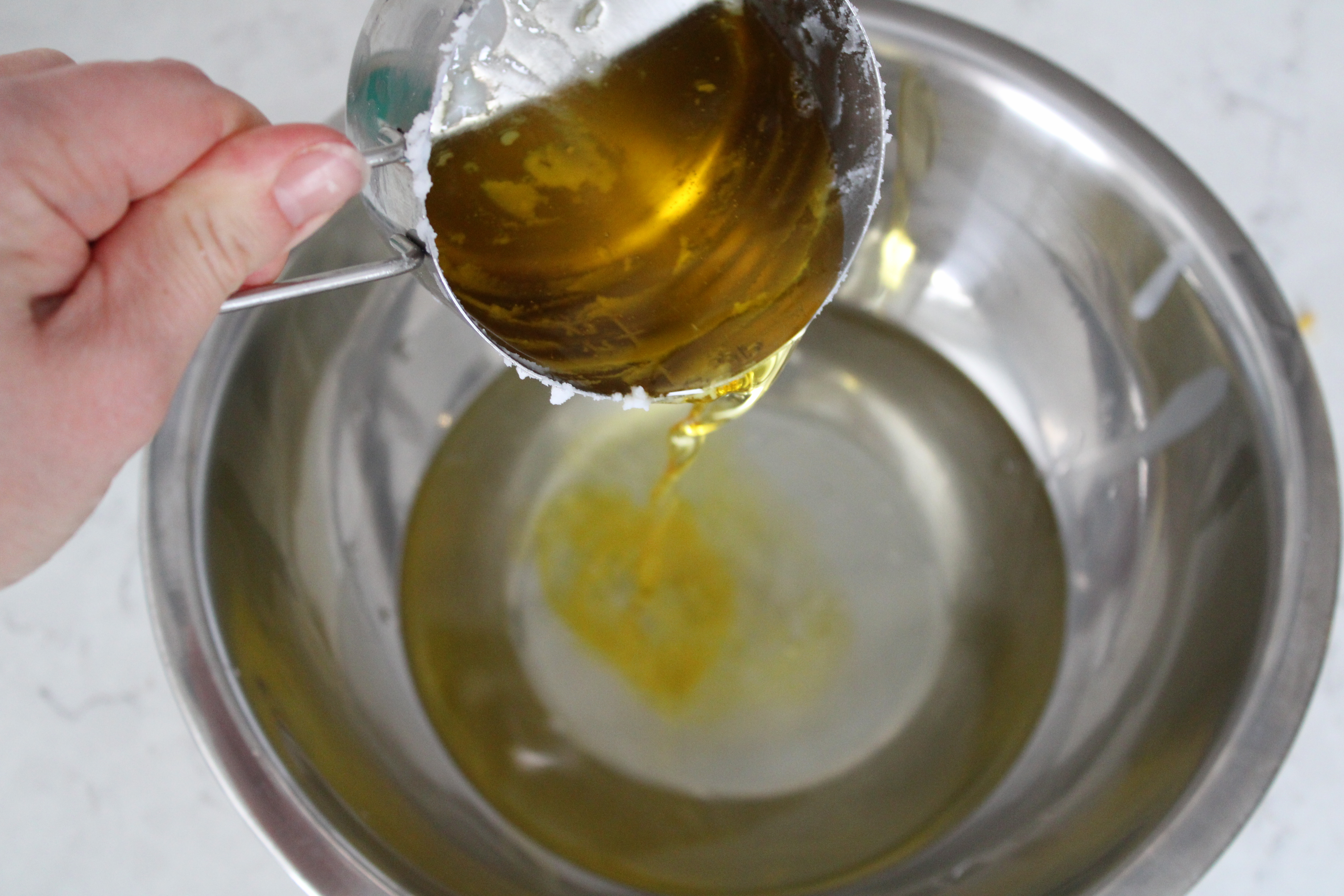
Allow the mixture to cool for a few minutes.
Stir in 48 drops of your favorite essential oil for a 1% dilution rate.

Optional: for a whipped, buttery consistency, transfer to a small mixing bowl or the bowl of a stand mixer and allow your tallow balm to rest at room temperature until the ingredients have solidified. Then using a hand mixer or the whisk attachment to your stand mixer beat the tallow on low for a minute or two until you’ve reached your desired consistency.
Store in an airtight glass mason jar in a cool, dark place to preserve freshness. If stored properly, tallow balm will have a shelf life of up to 12 months.
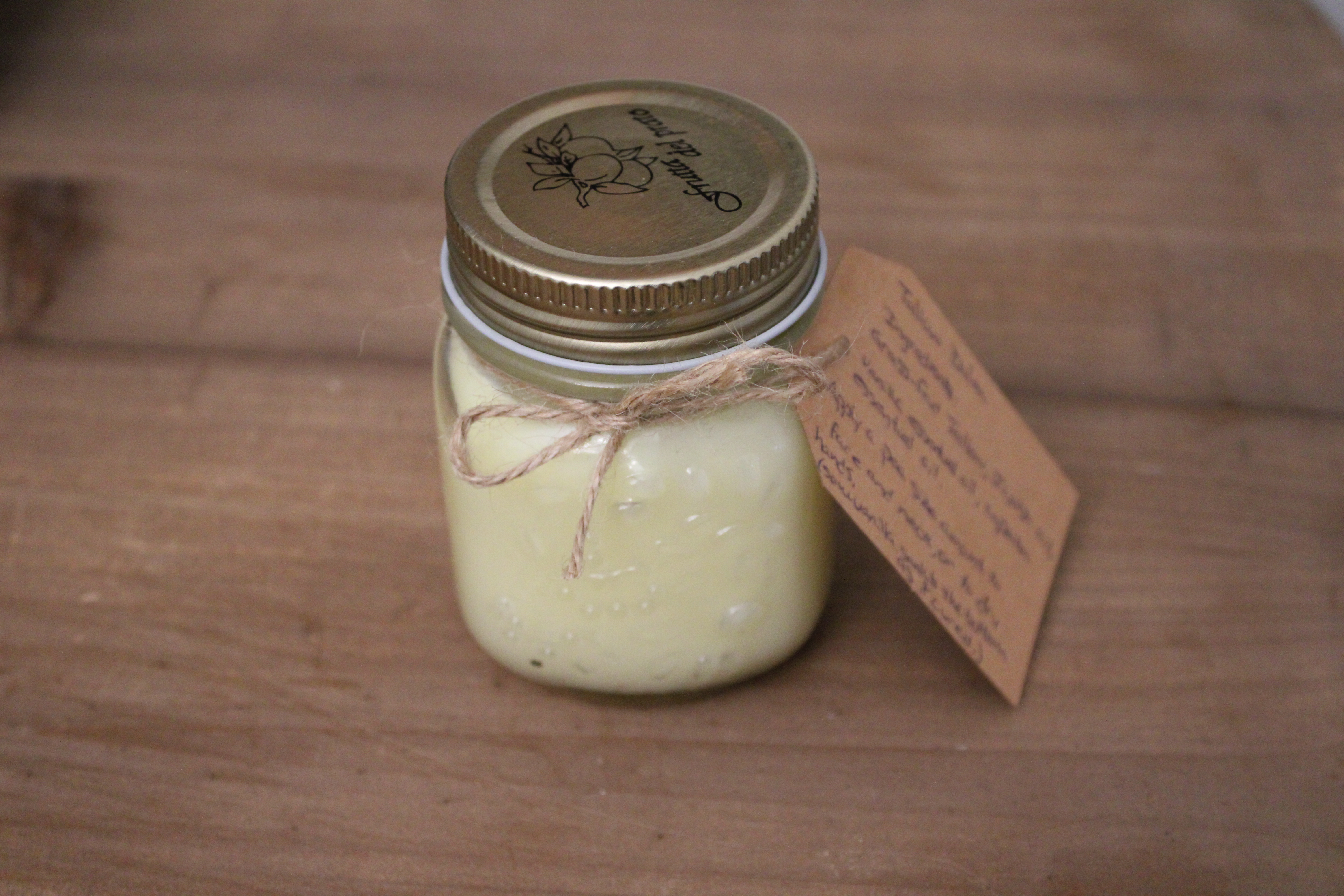
To Use: After cleansing your face with our Raw Honey Face Wash, apply a pea size amount of tallow balm to clean skin. A little bit goes a long way!
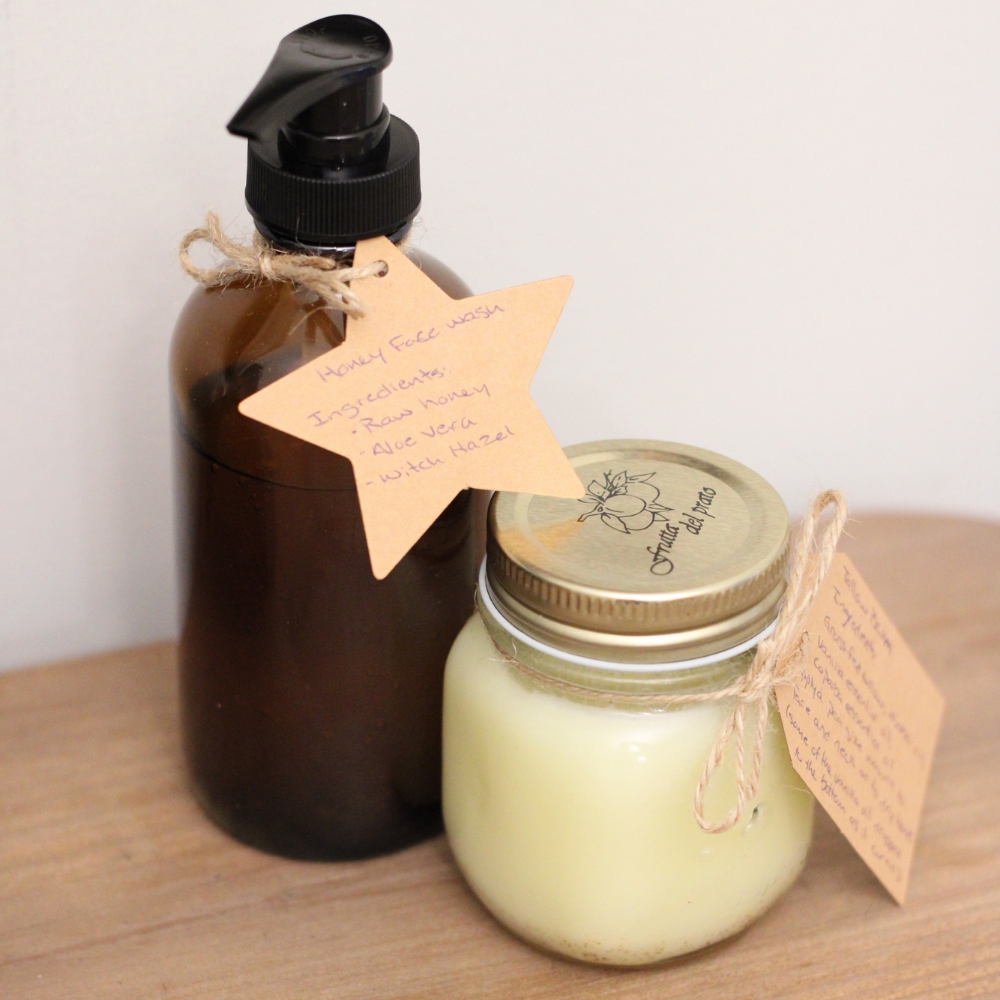
Is Grass-fed Tallow Good For Skin?
By this point you know I love using grass-fed tallow as my daily moisturizer, and I talked about some of the benefits I’ve personally seen since I started using it daily. But what does nutritional science say about why grass-fed tallow is good for skin health?
Rich in Healthy Fats
Grass-fed tallow is a source of healthy fats, including omega-3 and omega-6 fatty acids. These fats contribute to the maintenance of skin cell structure and function.
Vitamins and Antioxidants
Tallow from grass-fed animals is naturally high in fat soluble vitamins A, D, E, and K. These nutrients offer some amazing benefits, playing a role in skin repair, protection against environmental damage, and supporting overall skin health.
Compatible with Natural Skin Oils
Tallow has a composition that is similar our natural skin oils. This similarity allows for better absorption and integration into the skin, and will tend not to leave a greasy residue. For this reason, beef tallow moisturizer is ideal for individuals with dry skin, and oily skin alike.
Collagen Support
Thanks to tallows saturated fat content, it may support collagen production, a protein required for skin elasticity and firmness.
Free of Harsh Chemicals
Tallow sourced from grass-fed animals is a natural skincare option, avoiding potentially harmful chemicals found in some commercial beauty products.
Grass-fed vs Grain-fed, What’s the Difference?
You’ll notice throughout this article I reference grass-fed tallow. And while the nutritional composition of tallow, whether from grass-fed or grain-fed beef, can vary, primarily due to differences in the animals’ diets. Here are some benefits to carefully sourcing tallow from grass fed cows.
Omega-3 Fatty Acids
Grass-fed beef typically contains higher levels of omega-3 fatty acids compared to their grain-fed counterparts. Omega-3s are known for their anti-inflammatory properties.
Conjugated Linoleic Acid (CLA)
Grass-fed tallow tends to have higher levels of CLA, a type of beneficial fatty acid associated with potential health benefits, including assistance in cell turnover. This may support a more youthful complexion.
Vitamins and Minerals
Grass-fed tallow tends to contain higher levels fat-soluble vitamins A, vitamin D, and various antioxidants, depending on the animal’s access to diverse pasture.
Antioxidants
The varied diet of grass-fed animals may result in tallow with more diverse antioxidant content, contributing to potential health benefits.
Vitamin E Content
Tallow from grass-fed cows may contain higher levels of vitamin E compared to grain-fed tallow. Vitamin E is an antioxidant that plays a role in skin health and helps protect cells from oxidative damage.
Tallow Balm for Keratosis Pilaris
It may be helpful to start by answering the question “What is keratosis Pilaris?”
Keratosis Pilaris (KP) is a relatively common skin condition that is characterized by the presence of small bumps on the skin. These bumps may be red, white, brown, or flesh-colored, and often have a rough texture. They most commonly appear where hair follicles are present (such as outer arms and thighs).
As I mentioned, after I had been consistently using my homemade tallow balm on my arms, I noticed a drastic improvement in my KP. Thrilled with this unexpected benefit, it prompted my curiosity as to why this could be. Believed to result of Vitamin A deficiency, KP seemed to find relief in grass-fed tallow. Based on my experience and limited online information, topically applying this animal fat, rich in fat-soluble vitamin A, addressed the root cause of my keratosis pilaris and naturally supported my body.
Jojoba Oil Skin Benefits
Moisturizing
Jojoba oil closely resembles the natural oils produced by the skin (sebum). This makes it an excellent moisturizer, helping to keep the skin hydrated without clogging pores.
Balanced Sebum Production
Despite being a moisturizing oil, jojoba oil can also help regulate sebum production, making it a popular choice for oily skin or acne-prone skin.
Antibacterial
The oil has natural antimicrobial properties, which again makes it supportive of acne-prone skin.
Anti-aging Properties
Jojoba oil’s antioxidants and moisturizing properties may help reduce the appearance of fine lines and wrinkles, contributing to a more youthful complexion.
Rosehip Oil Skin Benefits
Rich in Essential Fatty Acids
Rosehip oil is high in essential fatty acids, such as omega-3 and omega-6, which are supportive of a healthy complexion. These fatty acids help to strengthen the skin barrier, keeping it hydrated and supple.
Rich in Vitamin A
Rosehip oil is a rich source of vitamin A, specifically in the form of beta-carotene. Vitamin A is important for promoting skin regeneration and improving the appearance of scars and wrinkles.
Vitamin C Boost
Rosehip oil contains a high concentration of vitamin C, which is a powerful antioxidant. Vitamin C helps protect the skin from oxidative stress caused by free radicals.
Anti-Aging Properties
The combination of antioxidative vitamins A and C makes rosehip oil an excellent choice when looking to support a more youthful complexion.
Hydrating and Moisturizing
Rosehip oil is a lightweight oil, easily absorbed by the skin. It provides deep hydration without clogging pores, making it suitable for various skin types, including dry and sensitive skin.
Supports Acne-prone Skin
Rosehip oil is non-comedogenic, meaning it’s unlikely to clog pores. It can be beneficial for acne-prone skin by providing hydration without exacerbating breakouts.
Rosehip oil is suitable for a variety of skin types and can address various skin concerns.
In Conclusion: Nurturing Skin With Grass-fed Tallow
My personal year-long journey with grass-fed tallow balm has been nothing short of transformative, uncovering the incredible benefits of natural ingredients. It is my hope that this article offered you insight into some of my favorite natural ingredients for skin health, including jojoba oil, rosehip oil, and of course, grass-fed tallow. From its richness in healthy fats and fat-soluble vitamins to its compatibility with skin lipids and collagen support, grass-fed tallow stands out among holistic skincare options. As we embrace the holistic approach to skincare, let this journey be a reminder that our skin thrives when we nourish it not only from within but also with the wholesome ingredients in our skin care routine.
Easy Homemade Grass-fed Tallow Balm
Equipment
- Double boiler
- Glass mason jar with an airtight lid to store your tallow balm
Materials
- 1 cup grass fed beef tallow
- 2 TBSP Jojoba Oil
- 2 TBSP Rosehip Oil
- 48 drops essential oil of choice
Instructions
- Begin by filling a small saucepan with an inch or two of water. Place the double boiler over the pot of water, and bring water to a boil over medium-high heat
- Once the water is boiling, turn the burner down to a very low heat
- Add tallow to the double boiler and allow it to melt. You want the tallow to melt completely, but not boil. Stir as needed
- Once tallow has completely melted turn off stove and remove from heat
- Add the jojoba oil and rosehip oil to the melted tallow. Stir well to thoroughly combine ingredients
- Allow the mixture to cool for a few minutes
- Stir in 48 drops of your favorite essential oil for a 1% dilution rate
- Optional: for a whipped, buttery consistency, transfer to a small mixing bowl or the bowl of a stand mixer and allow your tallow balm to rest at room temperature until the ingredients have solidified. Then using a hand mixer or the whisk attachment to your stand mixer beat the tallow on low for a minute or two until you've reached your desired consistency.
- Store in an airtight glass mason jar in a cool, dark place to preserve freshness. If stored properly, tallow balm will have a shelf life of up to 12 months.
Notes
- To Use: After cleansing your face with out Raw Honey Face Wash, apply a pea size amount to clean skin. You won’t need much as a little bit goes a long way.
- Check out my favorite essential oil dilution chart
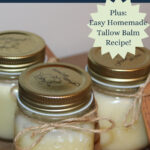
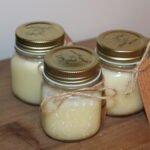
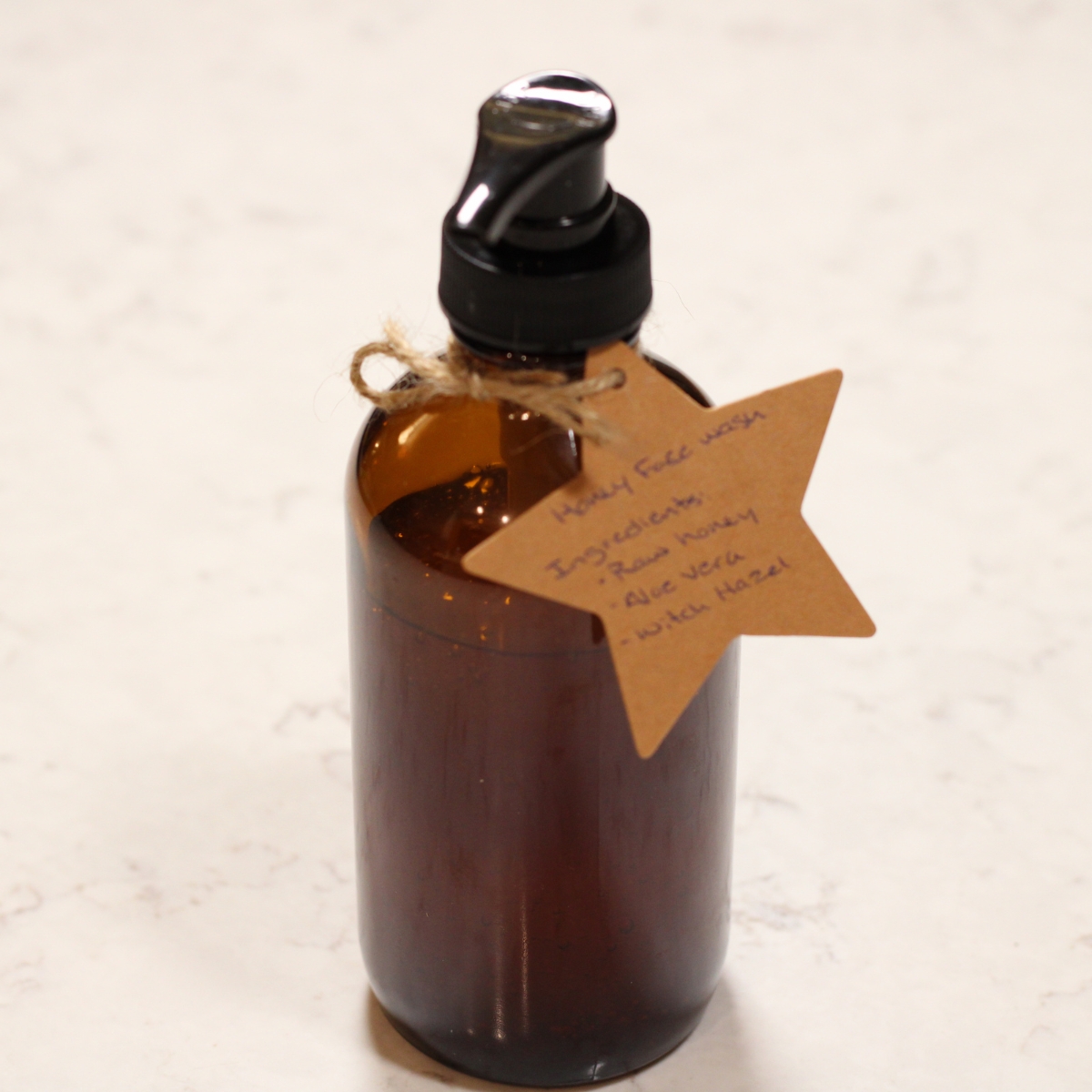
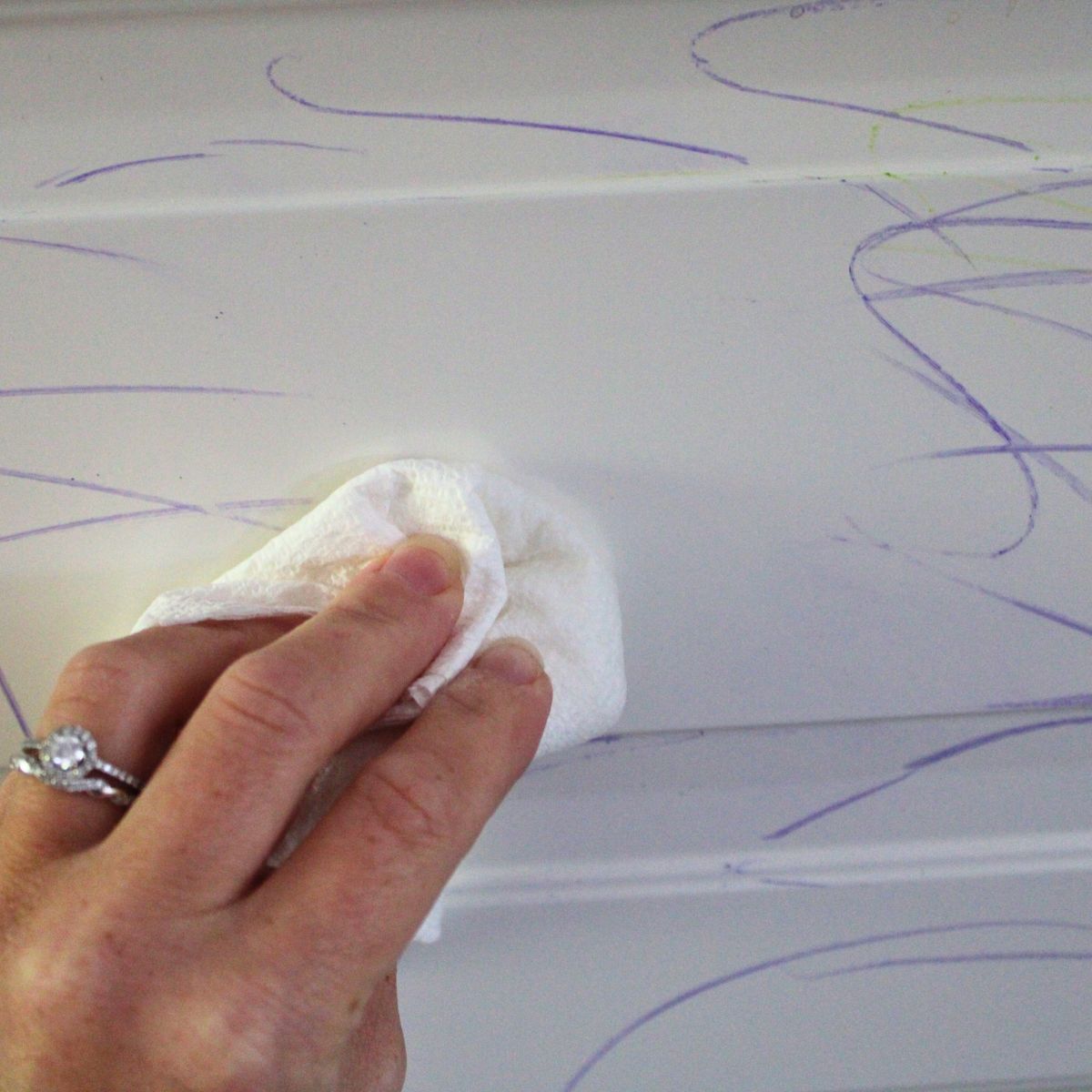
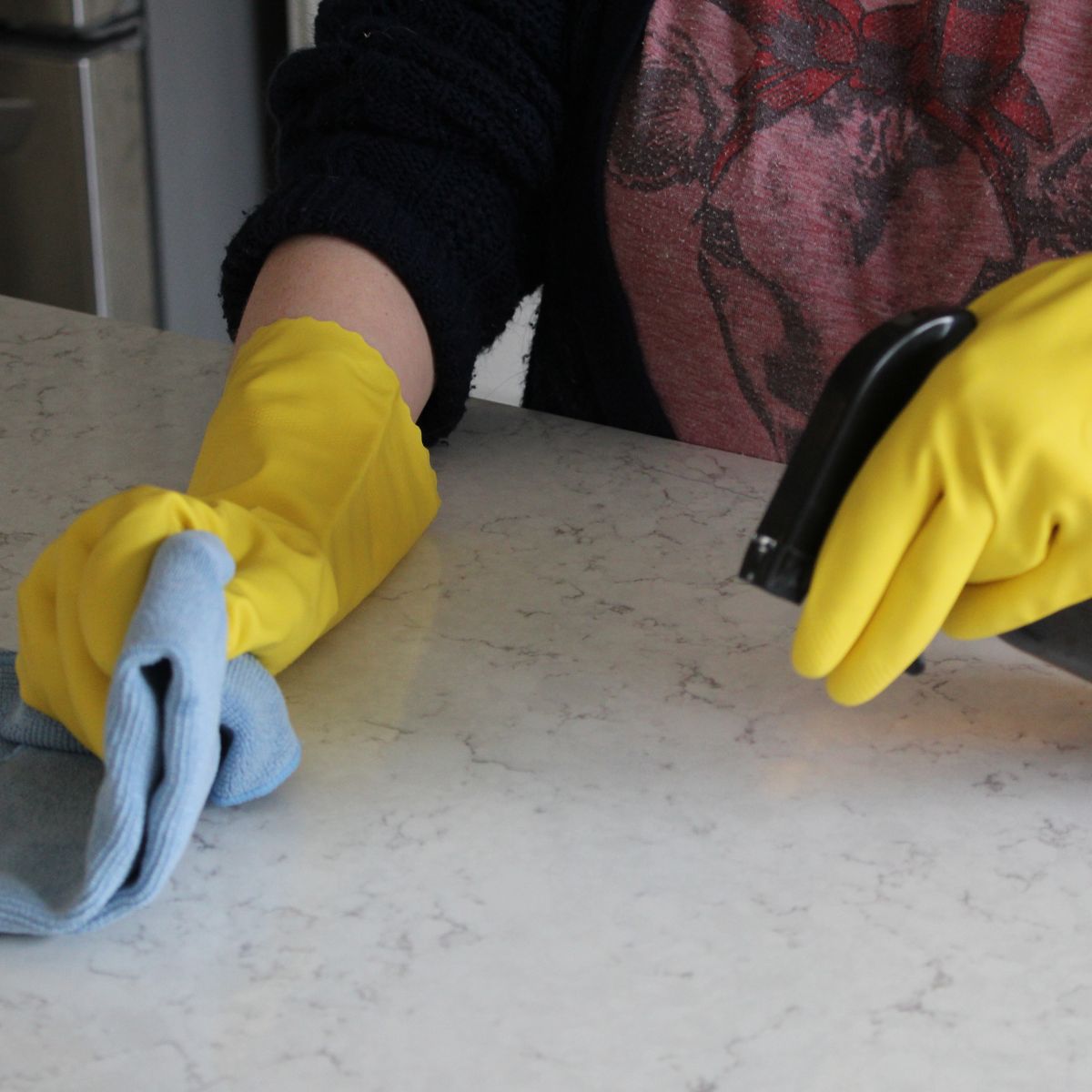
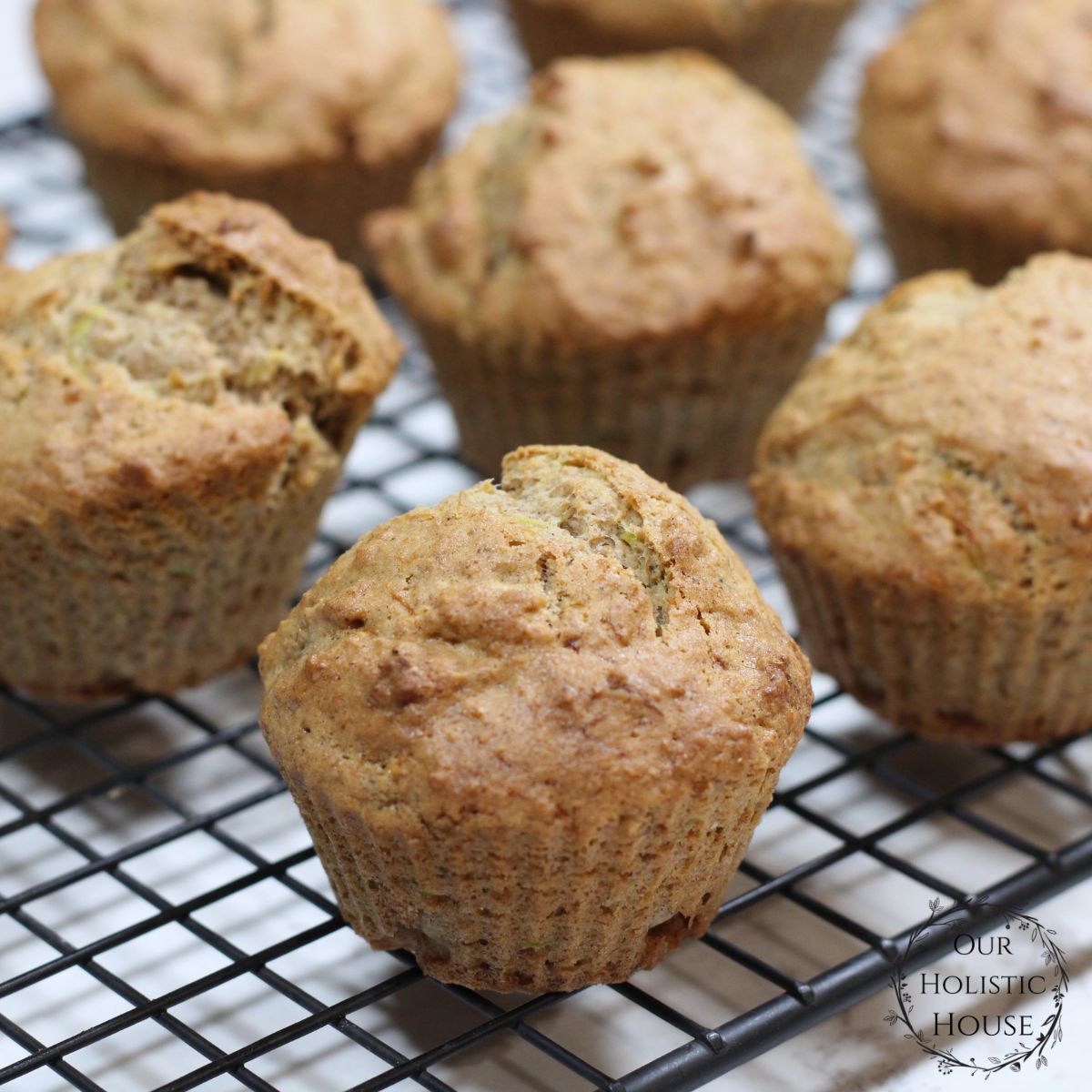
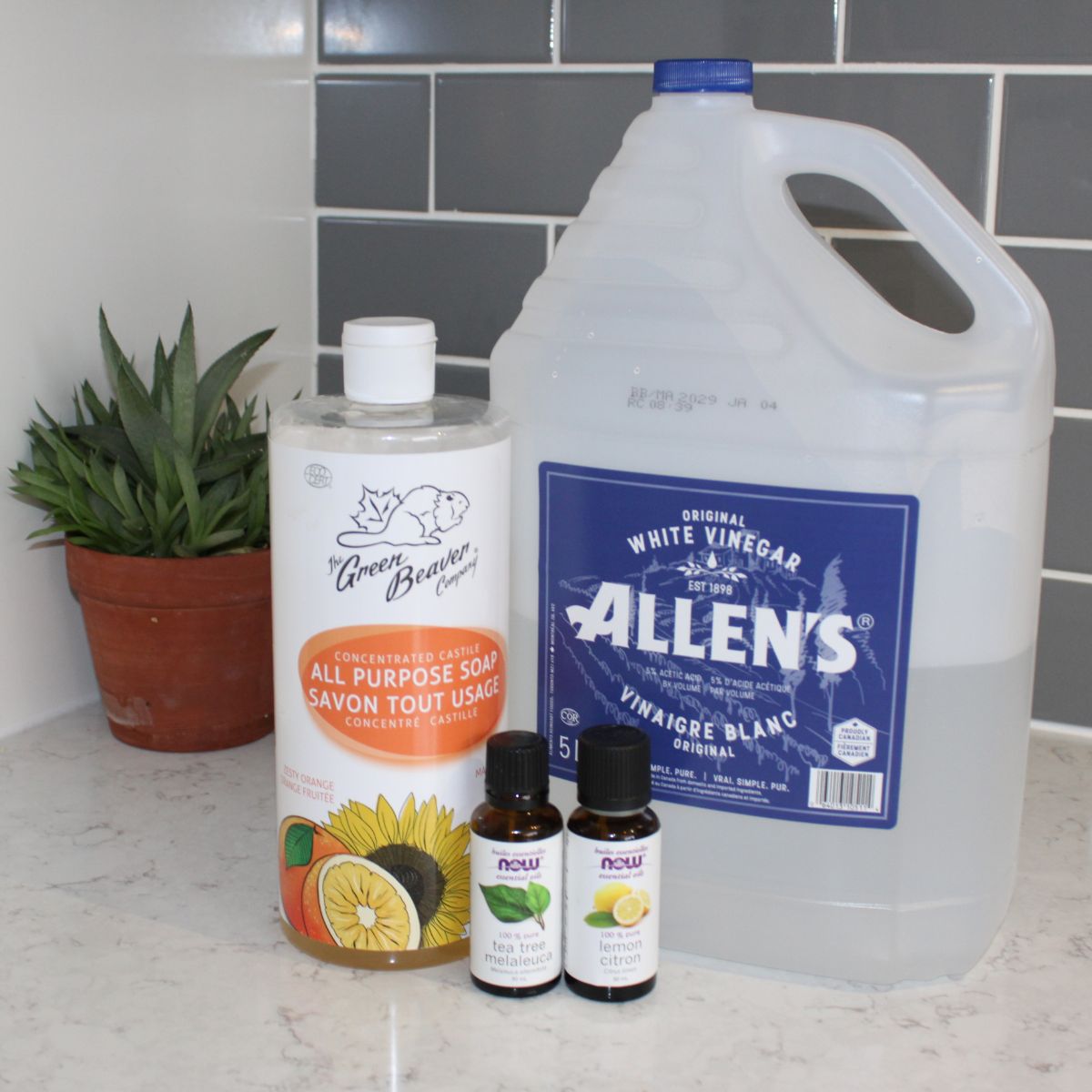
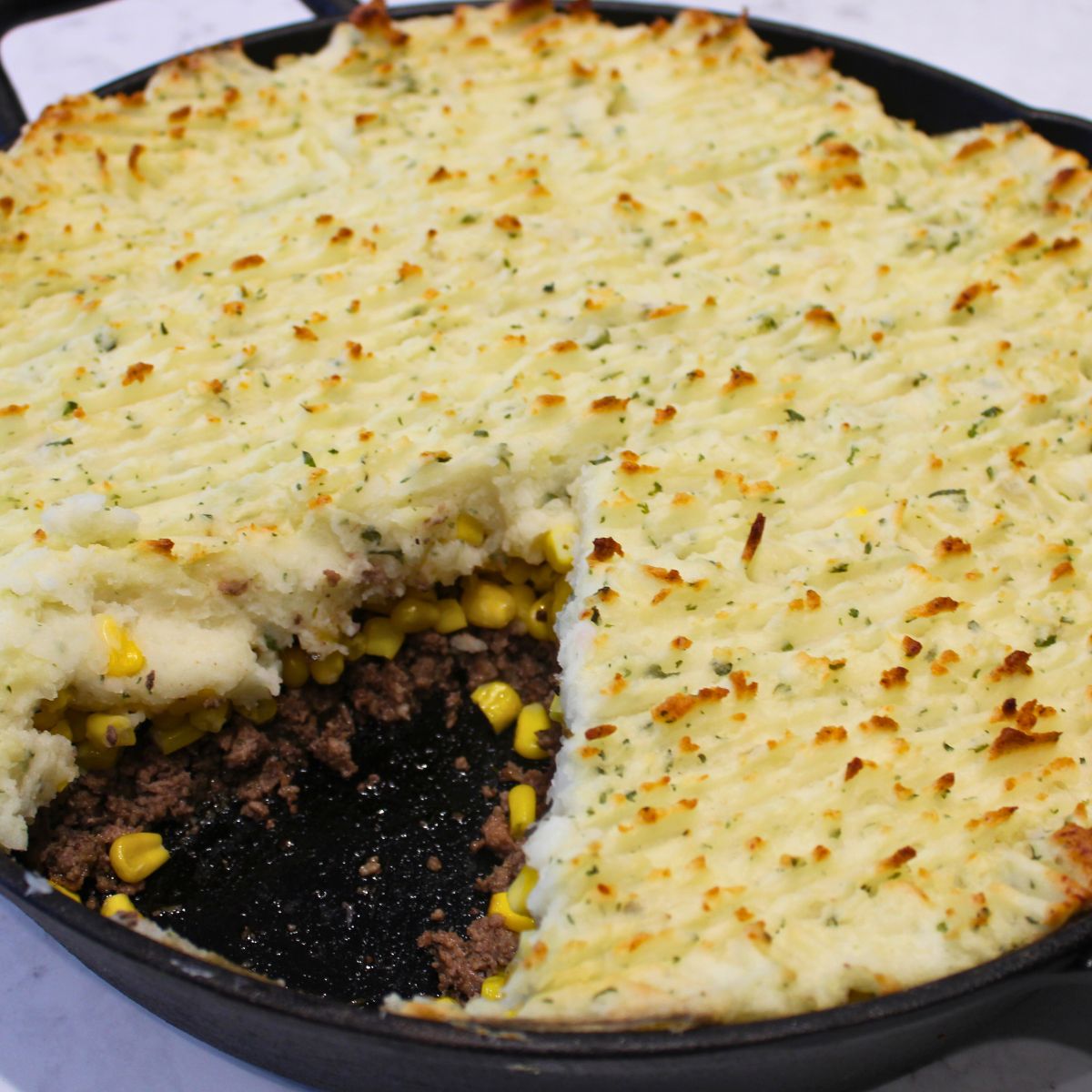
Love this!! I’ve been learning about tallow and wanting to try it on my skin. I’m so happy I found this recipe & can’t wait to make the switch. 🙏🏼
Thank you so much! I hope you love this recipe as much as I do! Feel free to share your experience once you make the switch! If you have any questions along the way, don’t hesitate to ask. 😊